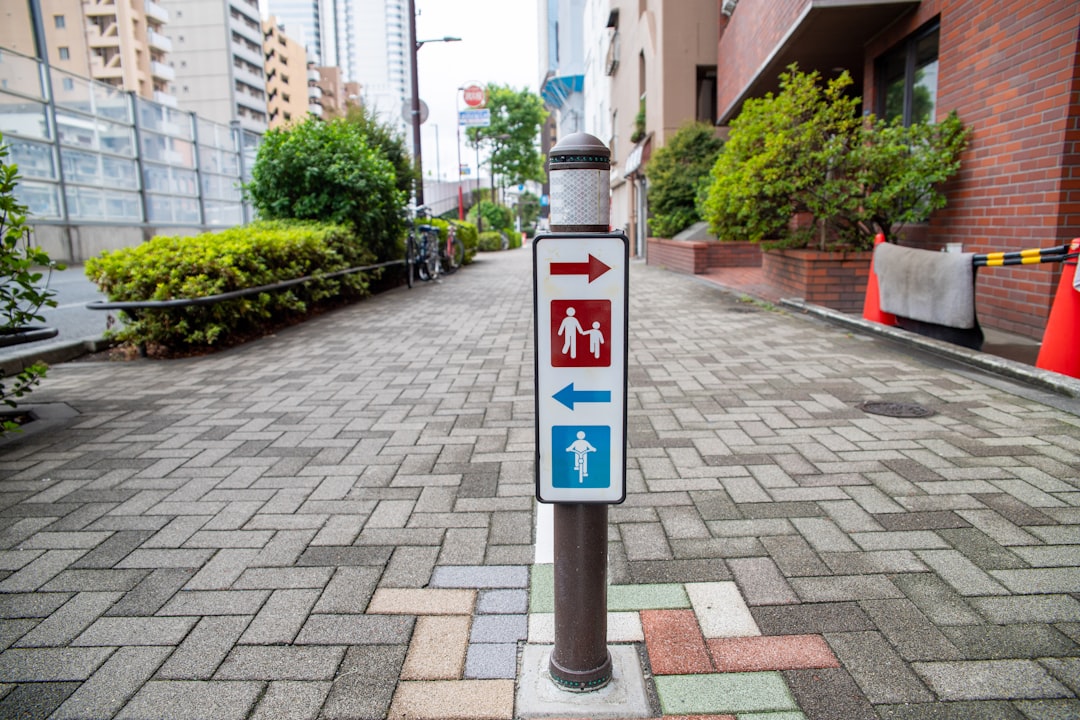Cislunar space, the region between the Earth and the Moon, is emerging as a critical frontier for human exploration and commercial activities. As interest in lunar missions intensifies, the need for effective traffic management in this area becomes increasingly apparent. Cislunar space is not merely a void; it is a dynamic environment where various spacecraft will operate, necessitating a structured approach to ensure safety and efficiency.
The concept of traffic management in this context involves coordinating the movements of satellites, landers, and other vehicles to prevent collisions and optimize operations. The burgeoning interest in cislunar space is driven by a combination of governmental and private sector initiatives. Nations are planning missions to establish a sustainable human presence on the Moon, while commercial entities are exploring opportunities for resource extraction and tourism.
This convergence of interests underscores the necessity for a comprehensive framework that can govern activities in cislunar space. As humanity prepares to expand its reach beyond Earth, establishing robust traffic management protocols will be essential to facilitate safe and orderly operations.
Key Takeaways
- Cislunar space traffic management is becoming increasingly important as human activities in space expand beyond Earth’s orbit.
- Navigating cislunar space presents unique challenges due to the vast distances involved and the presence of natural celestial bodies.
- Current efforts in cislunar space traffic management focus on developing technologies and regulations to ensure safe and efficient operations.
- International collaboration is essential for effective cislunar space traffic management, as it involves multiple countries and space agencies.
- Efficient cislunar space traffic management offers opportunities for economic growth and scientific exploration, but requires careful regulation and investment in new technologies.
The Growing Importance of Cislunar Space
The significance of cislunar space has grown exponentially in recent years, fueled by advancements in technology and an increasing number of planned missions. This region serves as a gateway for deeper space exploration, acting as a staging ground for missions to Mars and beyond. The Moon’s proximity to Earth makes it an ideal location for testing new technologies and conducting scientific research that can inform future endeavors.
As nations and private companies set their sights on lunar exploration, cislunar space is poised to become a bustling hub of activity. Moreover, cislunar space holds potential economic benefits that cannot be overlooked. The Moon is rich in resources, including water ice and rare minerals, which could be harnessed to support long-term human presence and even fuel further exploration.
As such, the strategic importance of cislunar space extends beyond mere exploration; it encompasses economic, scientific, and geopolitical dimensions that will shape the future of humanity’s presence in the cosmos.
Challenges of Navigating Cislunar Space

Navigating cislunar space presents a unique set of challenges that must be addressed to ensure safe operations. One of the primary concerns is the lack of established traffic management systems in this relatively unregulated environment. Unlike low Earth orbit, where guidelines and protocols are more developed, cislunar space is still in its infancy regarding governance.
This absence of regulation raises the risk of collisions between spacecraft, which could have catastrophic consequences for missions and investments. Additionally, the dynamic nature of cislunar space complicates navigation efforts. The gravitational influences of both the Earth and the Moon create complex trajectories that spacecraft must navigate.
This requires advanced navigation systems capable of accounting for these gravitational forces while ensuring precise positioning. Furthermore, the potential for debris from past missions adds another layer of complexity, as operators must be vigilant about avoiding both natural and artificial hazards in this region.
Current Efforts in Cislunar Space Traffic Management
| Effort | Description |
|---|---|
| Regulatory Framework | Developing international agreements and guidelines for managing traffic in cislunar space. |
| Tracking Systems | Implementing advanced tracking and monitoring systems to keep track of satellites and spacecraft in cislunar space. |
| Collision Avoidance | Creating protocols and technologies to prevent collisions between objects in cislunar space. |
| Communication Standards | Establishing communication standards for cislunar space traffic management to ensure safe and efficient operations. |
Recognizing the need for effective traffic management in cislunar space, various organizations are beginning to take proactive steps. Government agencies such as NASA and the European Space Agency (ESA) are collaborating with private companies to develop frameworks that can guide operations in this area. These efforts include establishing guidelines for mission planning, collision avoidance protocols, and data sharing among stakeholders to enhance situational awareness.
Startups focused on satellite technology and navigation systems are developing innovative solutions to address the challenges posed by this new frontier. By leveraging advancements in artificial intelligence and machine learning, these companies aim to create systems that can predict potential collisions and optimize flight paths in real-time.
The convergence of public and private efforts signifies a collective recognition of the importance of establishing a robust traffic management framework for cislunar space.
International Collaboration in Cislunar Space Traffic Management
The complexities of cislunar space traffic management necessitate international collaboration among nations and organizations. As multiple countries embark on lunar missions, it becomes imperative to establish cooperative agreements that facilitate information sharing and joint operations. Collaborative efforts can help mitigate risks associated with overlapping missions and ensure that all stakeholders adhere to common safety standards.
International forums such as the United Nations Office for Outer Space Affairs (UNOOSA) provide platforms for dialogue among nations regarding space governance. These discussions can lead to the development of treaties or agreements that outline responsibilities and protocols for operating in cislunar space. By fostering a spirit of cooperation, countries can work together to create a sustainable framework that promotes safe exploration while minimizing conflicts over resources and territory.
Regulations and Policies for Cislunar Space Traffic Management

As cislunar space becomes increasingly populated with spacecraft, the establishment of regulations and policies will be crucial for effective traffic management. Currently, there is no comprehensive legal framework governing activities in this region, which poses challenges for mission planners and operators. Developing clear guidelines will help define responsibilities, rights, and liabilities for all entities involved in lunar exploration.
Regulatory frameworks should address various aspects of cislunar operations, including licensing requirements for missions, collision avoidance protocols, and environmental considerations. By implementing policies that prioritize safety and sustainability, stakeholders can work towards minimizing the risks associated with increased activity in this region. Furthermore, these regulations should be adaptable to accommodate technological advancements and evolving mission profiles as humanity’s presence in cislunar space expands.
Technologies for Navigating Cislunar Space
The successful navigation of cislunar space relies heavily on advanced technologies that can enhance situational awareness and improve decision-making processes. One key area of focus is the development of sophisticated navigation systems capable of accurately determining spacecraft positions relative to both Earth and the Moon. These systems must account for gravitational influences while providing real-time data to operators.
In addition to navigation technologies, communication systems play a vital role in ensuring effective traffic management. Reliable communication links between spacecraft and ground control are essential for transmitting critical information regarding mission status, trajectory adjustments, and potential hazards. Innovations such as laser communication systems may offer higher data transfer rates compared to traditional radio frequencies, enabling more efficient information exchange among multiple spacecraft operating in cislunar space.
The Role of Satellites in Cislunar Space Traffic Management
Satellites will play an integral role in managing traffic within cislunar space by providing essential data for navigation and situational awareness. These satellites can monitor spacecraft movements, track potential collisions, and relay information back to mission control centers on Earth. By establishing a network of satellites specifically designed for cislunar operations, stakeholders can enhance their ability to manage traffic effectively.
Moreover, satellites equipped with advanced sensors can contribute to debris tracking efforts by identifying both natural celestial bodies and artificial objects in cislunar space. This information is crucial for collision avoidance strategies, allowing operators to make informed decisions about trajectory adjustments or mission modifications when necessary. As satellite technology continues to evolve, its integration into cislunar traffic management will become increasingly sophisticated.
Future Trends in Cislunar Space Traffic Management
Looking ahead, several trends are likely to shape the future of cislunar space traffic management. One significant trend is the increasing involvement of private companies in lunar exploration efforts. As commercial interests expand into this region, there will be a growing demand for effective traffic management solutions that can accommodate diverse mission profiles while ensuring safety.
Another trend is the advancement of autonomous systems capable of making real-time decisions regarding navigation and collision avoidance. As artificial intelligence continues to evolve, these systems may be able to analyze vast amounts of data quickly, allowing them to predict potential conflicts before they occur. This shift towards automation could revolutionize how spacecraft operate within cislunar space, enhancing overall efficiency while reducing human error.
Opportunities and Benefits of Efficient Cislunar Space Traffic Management
Efficient traffic management in cislunar space presents numerous opportunities that extend beyond mere safety considerations. By establishing a structured framework for operations, stakeholders can unlock new avenues for collaboration and innovation among nations and private entities alike. This collaborative environment can foster technological advancements that benefit not only lunar exploration but also terrestrial applications.
Furthermore, effective traffic management can enhance resource utilization within cislunar space by optimizing mission planning and execution. By minimizing delays caused by collisions or miscommunications, operators can maximize their return on investment while contributing to sustainable practices in space exploration. Ultimately, efficient traffic management will pave the way for a thriving ecosystem in cislunar space that supports scientific discovery, economic growth, and international cooperation.
The Path Forward for Cislunar Space Traffic Management
As humanity stands on the brink of a new era in space exploration, the importance of establishing effective traffic management protocols in cislunar space cannot be overstated. The convergence of governmental initiatives and private sector innovation presents a unique opportunity to create a comprehensive framework that ensures safe operations while fostering collaboration among diverse stakeholders. Moving forward, it will be essential for nations to engage in dialogue regarding regulations and policies governing activities in this region.
By prioritizing international cooperation and leveraging advancements in technology, stakeholders can work together to navigate the complexities of cislunar space effectively. The path ahead may be challenging, but with concerted efforts towards establishing robust traffic management systems, humanity can confidently embrace its future among the stars.
The future of space traffic management, particularly in the cislunar region, is becoming an increasingly critical topic as more nations and private companies set their sights on lunar exploration and exploitation. Effective management of space traffic in this area is essential to prevent collisions and ensure the safety of both crewed and uncrewed missions. An interesting perspective on this issue can be found in a related article on Real Lore and Order, which discusses the challenges and potential solutions for managing the growing number of spacecraft operating between Earth and the Moon. This article provides valuable insights into the technological and regulatory frameworks that could shape the future of space traffic management in the cislunar space.
WATCH THIS! 🚀 Why The Moon Is The Next Battlefield: The Geopolitics of Cislunar Space
FAQs
What is cislunar space?
Cislunar space refers to the region of space between the Earth and the Moon. It is an area of increasing interest for space exploration and commercial activities.
What is space traffic management?
Space traffic management involves the monitoring, coordination, and regulation of space activities to ensure the safe and sustainable use of outer space.
Why is space traffic management important in cislunar space?
As commercial and government activities in cislunar space increase, the need for effective space traffic management becomes crucial to avoid collisions, minimize space debris, and ensure the safety of spacecraft and astronauts.
What are the current challenges in cislunar space traffic management?
Challenges in cislunar space traffic management include the lack of standardized regulations, the increasing number of satellites and spacecraft, and the potential for conflicts between different spacefaring nations and commercial entities.
What are some proposed solutions for cislunar space traffic management?
Proposed solutions for cislunar space traffic management include the development of international guidelines and regulations, the use of advanced tracking and monitoring technologies, and the establishment of communication protocols between space operators.
How will cislunar space traffic management impact future space exploration and commercial activities?
Effective cislunar space traffic management will be essential for enabling safe and sustainable space exploration, resource utilization, and commercial ventures in the region. It will also pave the way for future human missions to the Moon and beyond.
